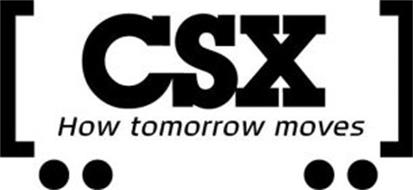The Baltimore Sun reports that CSX crews worked Friday and Saturday to repair a line that leads to the Howard Street tunnel in the city. The newspaper reports that trains began moving along the route before Noon Saturday.
There’s no word yet on the cause of the derailment, which sent freight cars from a viaduct to streets below. Those falling cars damaged an electric substation the museum uses to power streetcars on its campus. Because of the damage, the museum is closed until further notice, the newspaper reports.
Museum volunteers spent Sunday disassembling the substation remains and removing the undamaged electrical equipment inside to safe storage.
“CSX has been very nice to work with and has promised to do whatever it takes to get us up and running as soon as possible. If we waited for them to do this [disassembly of the substation ruins], though, there would be a lot of money and time lost,” says museum Vice President-Operation Edward Amrhein.
“Whereas if we do this work, we can probably be open in two months.”
Amrhein said CSX has already offered to build a new substation building and repair the track and overhead catenary.
More information is available online.
— Alexander D. Mitchell IV contributed to this report.















Charles – Re your observation on cable tension in recent NEC electrification – One of our PRR Technical & Historical Society members, who represented PRR in the tests leading up to the Metroliner introduction in 1968, reports that the original four DOT test cars had an issue with bouncing of the catenary, and therefore arcing, at 100 mph running and up, resolved by spacing the raised pantographs on the cars farther apart, and increasing the diameter of the trolley wire. Interestingly, GG1 motors, with the usual one raised pantograph, had been running up to 100 mph since the 1930’s, without a problem. Thus, I suppose, the weights to hold the new catenary more rigidly.
Dear George Pins,
Where have you been? There used to be a number of trolley cars that picked up electric power from a power line underground. Still today there are trolley cars in San Francisco that pick up their power from underground using a powered cable but that is another story that you might have learned about. There is always something new to learn looking into history. Just do a Google search……..
https://ggwash.org/view/2961/powering-the-streetcars-part-1-the-dilemma
Seem like a long time to get the trolley line back up and running. Just hire a contractor, or even contract people from Amtrak Electric traction department. It is all light weight stuff. I just hope some wire thief don’t walk by at night with wire cutters. CSX should pay for a 24/7 armed guard to prevent any thief untill they get the lines back up and juiced up.
“Overhead catenary” is like “6am in the morning,” or “VIN Number,” or “ATM Machine.” I could go on. I have never heard of “underground catenary.”
George is right. Catenary is the term used (with or without mathematical rigor) for overhead power. He is also correct on the definition of the curve. George goes part way to explaining the difference between a parabola and a catenary, curves which are similar to the eye but have a subtle difference in mathematics.
Third rail and (much more recently) induction describe other power delivery systems but they aren’t catenary.
Technically railroad power wire seldom “is hung freely” to echo George’s term. Typically it is in tension. When NEC electrification was extended east of New Haven in the late 1990’s, I was surprised to see the sizable concrete weights putting tension into the cables.
W. Cook – I’ll tell you where I’ve been. I’ve been using correct nomenclature for railroad power systems. I know what you are referring to. I was delighted as a boy that it looked like my Lionel three-rail track, but it wasn’t ever called, to my memory, catenary, by anyone. Technically, catenary is the curve formed when a wire or cable is hung freely from two points. That’s why the railroads called their overhead-wire power systems catenary.
Why are you all arguing over what is essentially good news? CSX is doing the right thing. Everyone concerned seems satisfied.
However Mr. Cook, the underground power pick up can be likened to a version of third rail. Catenary is catenary, and is always overhead.